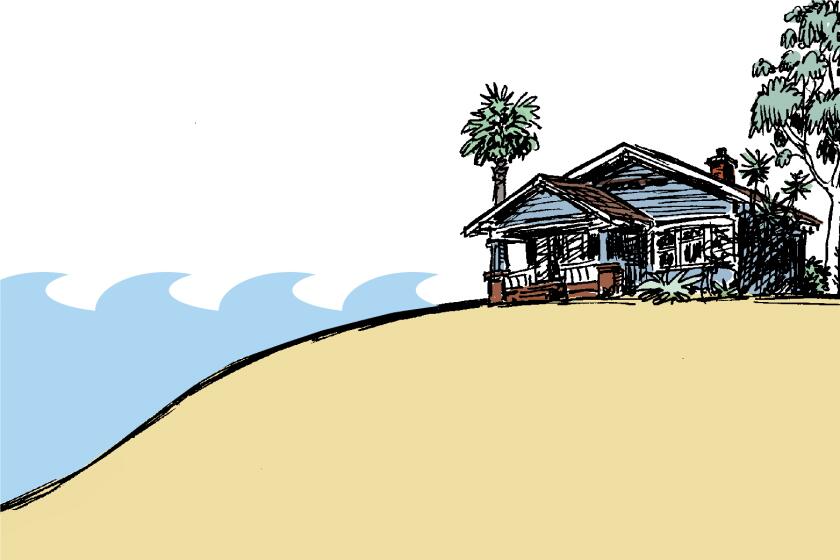California’s coastal King Tides Project kicks off this weekend. Here’s how you can help

- Share via
- This year’s King Tides Project is scheduled for Nov. 15-17 and Dec. 13-15.
- The California Coastal Commission is seeking photos from the public to help researchers visualize what rising sea levels would look like across coastal California.
Quick, snap a picture — the tides are rising.
The California Coastal Commission is asking the public to photograph high tidal waters for its King Tides Project, a community-led effort to help the public understand the effect of rising sea levels on coastal areas. During king tides over the next two months, the high water mark is projected to be 1 to 2 feet higher than average across the coastline on certain weekends.
This year the commission is seeking photographs during king tides Nov. 15-17 and Dec. 13-15. The images submitted will be added to an interactive map to help researchers document flood and erosion risks in coastal areas. The photos will also enable researchers to validate climate change models by comparing them to reality. Images of king tides from previous years are available on the project’s website.
King tides are not a scientific term — scientists call them perigean spring tides. They are not a byproduct of climate change, but they can help people visualize what rising sea waters would look like in their communities, the California Coastal Commission said.
Tides are caused by the gravitational pull of the moon and sun and are generally very predictable. The highest tides — king tides — are seen during new and full moons when the sun, Earth and moon are in a line.
What are king tides and will they get worse with climate change?
California expects an average statewide sea level increase of 0.8 feet in the next 30 years due to human-caused climate change. High greenhouse gas emissions from human activity cause global temperatures to rise, melting ice sheets and glaciers, which in turn increases the volume of water in the ocean — encroaching on shorelines around the world.
Submitted photos should be taken as close to high tide in that area as possible, the commission says. To be safe, never turn your back on the ocean, and don’t disturb shore birds taking cover above the tide line while taking your photos. For the purposes of the project, the best photos are taken in areas susceptible to flooding and erosion, and where water levels can be gauged against identifiable landmarks such as cliffs, rocks, roads, buildings, bridge supports, sea walls, staircases and piers.












